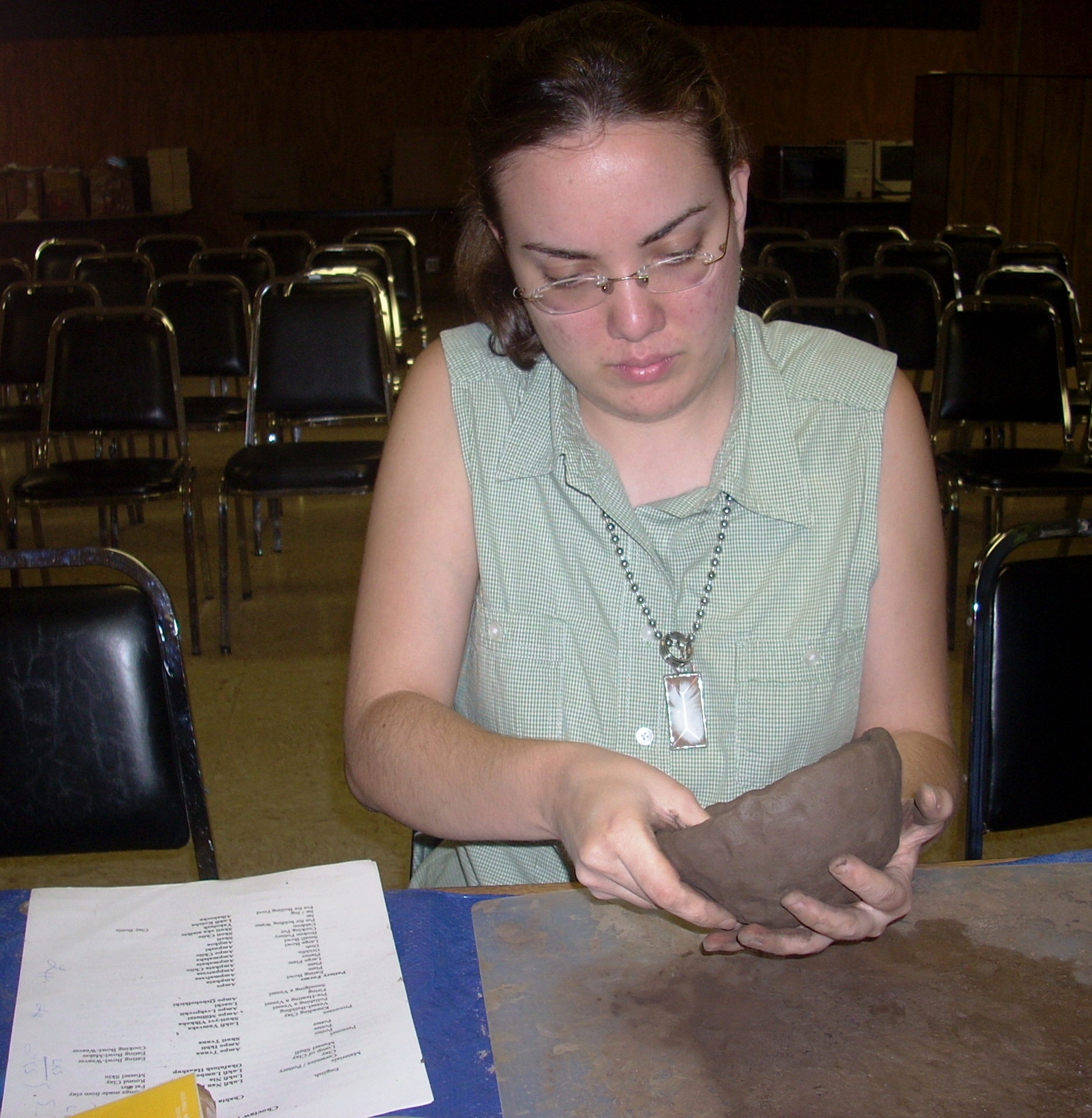Traditional Pottery Class
I originally posted this on my other blog, Choctaw Spirit, but it was too cool of an experience not to post here. For Him,
Sarah Elisabeth
>>>
Antlers, Oklahoma
I sat at the tarp-covered table and Brian (instructor) emptied a small shovel full of mud in front of me. At least it looked like mud. In reality, this was called clay, direct from tribal lands in McCurtain County.
Ian Parker, Choctaw Tribal Archeologist, worked with his own clay while talking about the differences between mixing the clay with sand or shell. He also expounded on the material available to Choctaws on the Trail of Tears.
I did as instructed, crumbling the mud, uh, clay, into bitty pieces, extracting little stems and roots until it was “clean.”
Time to mix sand and ultra fine sand together before kneading it into the clay. I had to add water as it dried out. “A little water goes a long ways,” Brian reminded me.
As we worked, Brian talked about different techniques relating to this type of clay, and what was traditionally used by our ancestors.
In spite of the small amount I worked with, I felt intimidated by the clay. What did I know about shaping and molding it to perfection? The clay knew more about what it was supposed to do than I did.
When it really got out of my control, Brian handled it expertly. He flattened the bottom, straightened the sides, smoothed the interior. It began to look like the pencil cup I was going for—just bigger. Well, you’ll see what I mean.
I took it again, feeling bold. I was going to work the thing into submission. If there was to be any finger indentions on the finished product, they would be mine.
Most things I don’t pick up on the first several tries. But with my second ball of clay, I was ready to make something happen. Anything.
I started with the traditional bowl like shape:
It cracked. I tried to smooth it back together, but I had let the clay get too dry. This time, I knew what to do with its uncooperativeness. I smashed it back together, added water, and kneaded.
About that time I heard the comment of someone making a coffee mug. Me and Mama went with it.
Rolled into a ball once again, I started in the center. Again, lessons learned, I focused on keeping the opening small, going deep without allowing the clay to spread out. When my thumb would no longer reach, I changed to my fingers and stretched their limits. Then I dropped it on its bottom to flatten it. I knew the action would make the clay spread and widen, so I was grateful to have kept it so tight.
As I worked with the clay, I realized something. I began to relax. Weeks old tensions released into a sooth calmness. Using my hands to mold the clay made me smile. I really enjoyed it.
About that time, I found myself engaged in conversation with some of the other students around the table. We talked about other projects they had done and the next steps in the process, including the firing. According to the sweet lady next to me, they bring lawn chairs and food, prepared to hang out awhile and socialize while the fire burned before the clay creations are buried in the coals overnight. On average, the clay needs to dry a minimum of two weeks before firing.
Okay, God just keeps directing our paths. Last week, my mom and I talked about writing a novella length story (longer than a short story, shorter than a novel) about the Choctaw Code Talkers of World War I. The flash fiction story I’d written on it earned a Faithwriters.com Editor’s Choice and was well received by readers.
Near the end of the class, two sisters prepared to leave. One took a picture of the newbies (me and my mom). We all introduced ourselves and she announced, “My grandfather was a Choctaw Code Talker. His name was Ben Caterby.”
We talked, and I asked for their phone numbers. Too amazing to be a coincidence.
Before we left, Ian and Brian loaded two plastics bags with clay and sand for us to play with at home. Our four creations nestled in bags and cardboard box lids, we said our thanks and goodbyes.
After they are fired, I’ll post pics of the finished products. At least I still have the banner of “I’m just a beginner” to hide behind.
What an experience.


